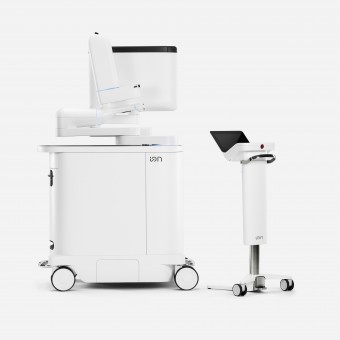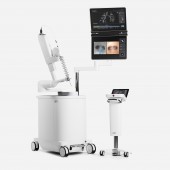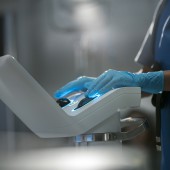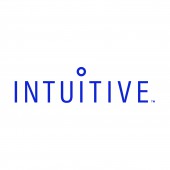Ion Endoluminal System Robotic Platform/Minimally Invasive Care by Intuitive Global Design Team |
Home > Winners > #86300 |
 |
|
||||
| DESIGN DETAILS | |||||
| DESIGN NAME: Ion Endoluminal System PRIMARY FUNCTION: Robotic Platform/Minimally Invasive Care INSPIRATION: At Intuitive, we believe that minimally invasive care is life-enhancing care. By combining ingenuity and intelligent technology, we expand the potential of physicians to heal without constraints. UNIQUE PROPERTIES / PROJECT DESCRIPTION: The Ion endoluminal system is a new robotic platform for minimally invasive biopsy deep in the peripheral lung. The system features an ultra-thin, human-controlled robotic catheter that allows physicians to navigate into hard-to-reach airways with unprecedented stability and precision. Ion offers capabilities that are unique and powerful: Reach. We invented a flexible robotic catheter that is small enough to reach the airways in all 18 segments of the lung, and precise and stable enough to navigate the tortuous path to get there. Our incredibly thin and flexible vision probe provides direct visualization the entire way. Precision. In many cases, the physician must be able to see beyond the walls of the lung to target the lesion. To solve this, we integrated an innovative fiber-optic shape sensor that provides precise location and shape information throughout the whole navigation and biopsy process. Unlike other tracking technologies, our fiber optic shape sensor is not sensitive to metal objects. The information provided by our shape sensor is coupled with 3D planning software that helps physicians map a detailed virtual plan of their patient’s lung. Targeting and biopsy are performed via these enhanced digital tools. Stability. Finally, we developed the Flexision needle—a flexible biopsy needle that slides through the twists, turns, and bends of the catheter smoothly without affecting aim. All of these technologies work together and strive to overcome the challenges of seeking a tissue diagnosis in the peripheral lung. OPERATION / FLOW / INTERACTION: While it is true that the Ion system brings something entirely new to the bronchoscopy suite, we believe its success depends on how well the technology can fit into existing environments and workflows. We took this into account in the design. Portability and small footprint were key objectives so the system could be nimble enough to be placed in a standard bronchoscopy suite setup without requiring special accommodations. Our technology is designed to easily enter the room when required and leave the room when it is not. We also made sure to preserve the ability for the clinicians to work where they wanted to work—ensuring physical access to each other and to the patient. Using the Ion system does not mean standing off to the side with a piece of equipment. When it comes to biopsy, the moment of truth happens at the needle. This is where years of practice and developing a feel for how the needle moves through tissue comes into play. We designed the Flexision needle to reproduce the touch and feel of traditional practices so physicians can use these well-honed skills when performing biopsies with the Ion platform. We worked tirelessly with technical teams to streamline interactions, to provide a product experience that balanced the new with the familiar. Physicians who have experienced the system often comment on how every aspect of the product feels so considered — it’s true that every part (physical and digital) was thoughtfully crafted to provide clarity and help them succeed. PROJECT DURATION AND LOCATION: Nearly ten years in development, The project began in 2009 and concluded in January of 2019. Designed in Sunnyvale, CA FITS BEST INTO CATEGORY: Medical Devices and Medical Equipment Design |
PRODUCTION / REALIZATION TECHNOLOGY: Human Controlled Robotic Catheter, Fiber-Optic Shape Sensing Technology, Flexision(TM) flexible biopsy needle. SPECIFICATIONS / TECHNICAL PROPERTIES: 53cm (width) x 94cm (length) x 170cm (Height) TAGS: robotics, bronchoscopy, lung biopsy, medical device, catheter, minimally invasive RESEARCH ABSTRACT: Developed over the course of many years, research for this product spanned many stages of the development process. Crucial to all projects at Intuitive is the process associated with developing a medical device for clearance by the FDA. This involves Formative and Summative analysis of proposed designs, engineering validation and verification processes as well as clinical trials. The design team has also engaged in regular field study where ethnographic data was collected and latent needs analyzed. CHALLENGE: Around the world, lung cancer is on the rise. Today, when a physician finds a small lesion on a patient’s lung, they have few options to perform a biopsy for tissue diagnosis. We recognized that innovation was needed to provide a minimally invasive solution with higher yield than previous approaches. The challenges are great: Early stage cancers are small in size and can be located anywhere in the lung, but are most often located in the outer 1/3—far out of reach of traditional bronchoscopy tools. In many cases, these existing methods require tools that are either too large or too limited to position accurately in the peripheral lung where airways can branch out to sizes less than 2mm in diameter. Also many lesions form outside the airway walls, where they cannot be seen by direct line of sight. Even if a physician can get close, they often must rely on limited external imaging and sensor technology to estimate where the lesion is in relation to the catheter. We created the Ion system as a platform to help provide physicians more reach , and to see what they previously couldn’t see. We look forward to the future and what physicians can do for their patients with this technology. ADDED DATE: 2019-04-01 22:52:38 TEAM MEMBERS (1) : Intuitive Global Design Team IMAGE CREDITS: Intuitive |
||||
| Visit the following page to learn more: http://www.intuitive.com | |||||
| AWARD DETAILS | |
 |
Ion Endoluminal System Robotic Platform/Minimally Invasive Care by Intuitive Global Design Team is Winner in Medical Devices and Medical Equipment Design Category, 2018 - 2019.· Press Members: Login or Register to request an exclusive interview with Intuitive Global Design Team. · Click here to register inorder to view the profile and other works by Intuitive Global Design Team. |
| SOCIAL |
| + Add to Likes / Favorites | Send to My Email | Comment | Testimonials | View Press-Release | Press Kit |







